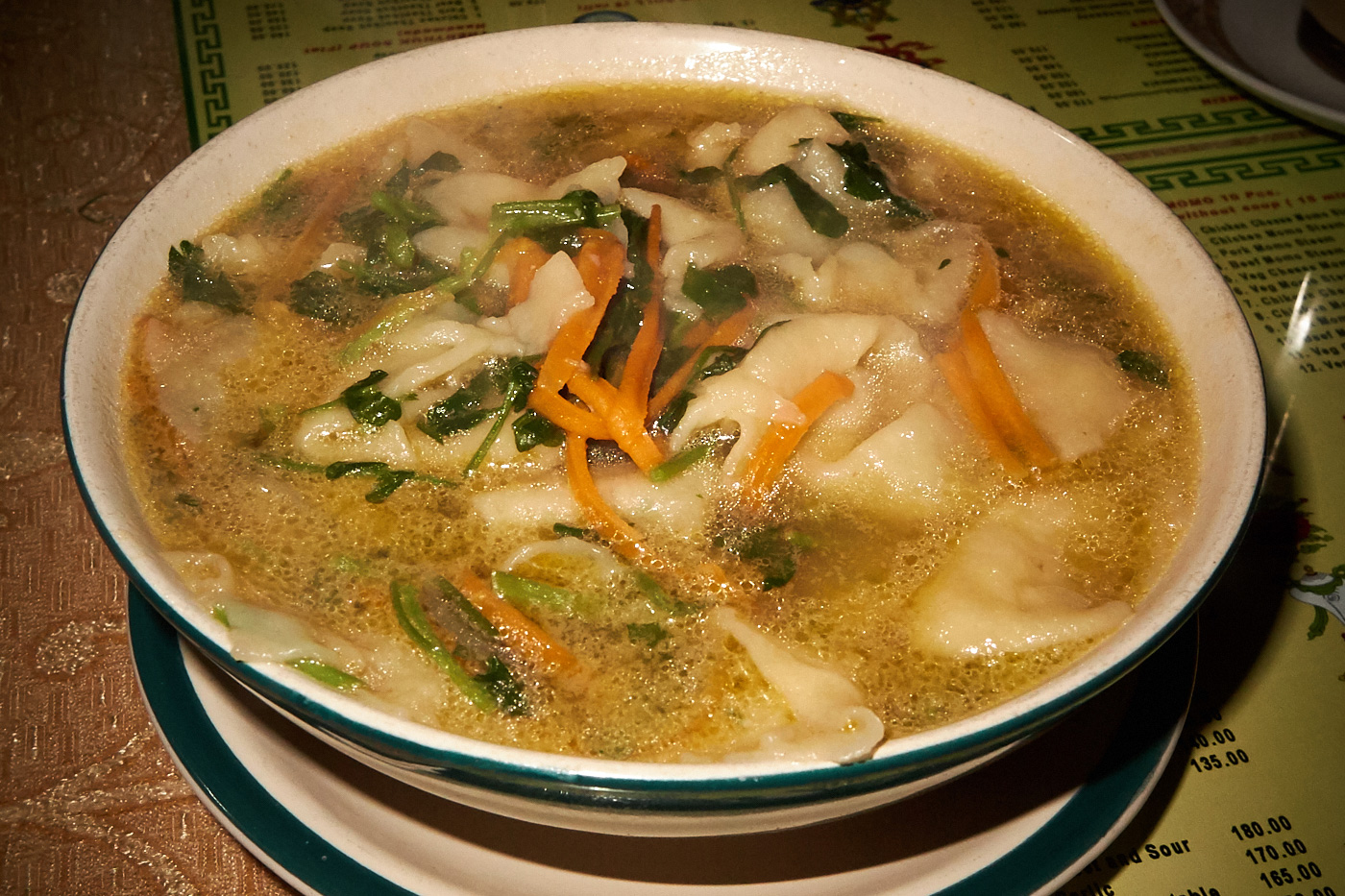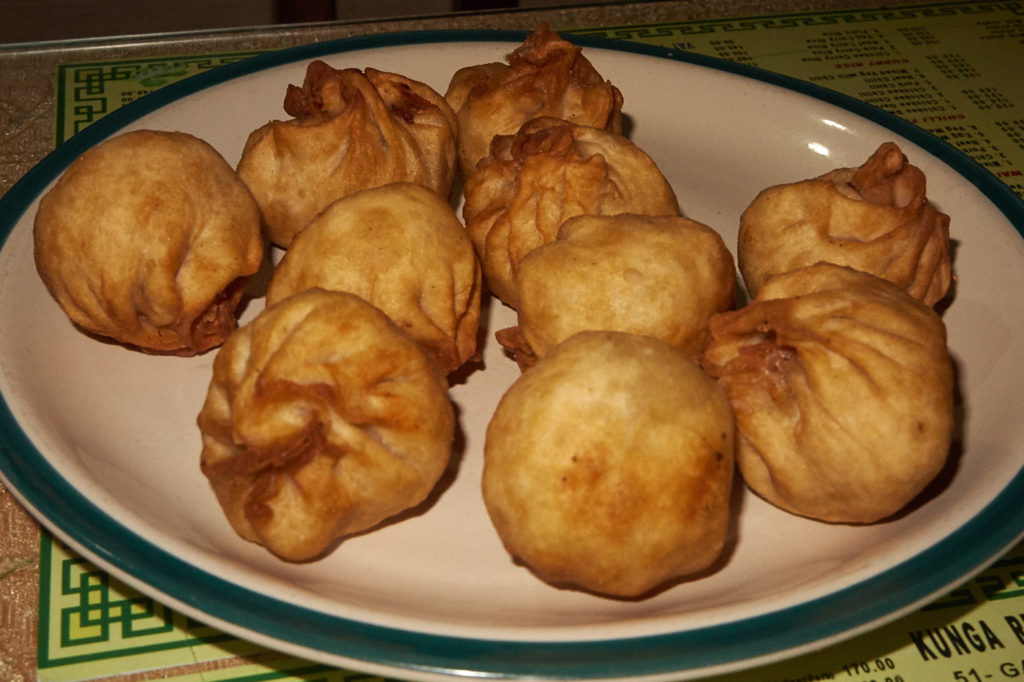A bowl of Tibetan noodles on a cold Darjeeling day

Kunga Restaurant
51 Ghandi Road, Chauk Bazaar, Darjeeling, India
Tel +91 95635 63219
“Are you in Darjeeling now?” demanded the email, “You must go to Kunga, you must have the thenthuk.” I did as I was told. After all the person at the other end had lived there so I figured it was good advice
Kunga is a tiny restaurant on Gandhi Road that has been run by a Tibetan family for over 20 years and is, apparently, something of an institution in Darjeeling.
It’s a cosy little place with room for no more than about 20 guests. The walls are pinewood panels varnished to a rich golden hue and decorated with Tibetan wall hangings, prayer flags and a portrait of the Dalai Lama. The seats have thick cushions and tables are topped with glass under which a menu is positioned for each guest. But most importantly it is nice and warm inside. Thanks to the restaurant’s popularity there is constant industry in the kitchen which not only warms the air but fills it with delicious aromas encouraging you to take off your jacket, unwind your scarf and relax.
The menu isn’t exclusively Tibetan, it offers Chinese dishes, fried rice, noodles and curries. It also offers omelets and even cornflakes for breakfast. But it is the Tibetan dishes that are the most interesting. Shabalay is a kind of pasty with a minced meat filling while momo are dumplings served ten to a plate. Both can be made with chicken beef, pork or vegetarian options. The momo can also be made with vegetables and cheese and can be either steamed or fried. The cheese option is excellent though you do have to be careful as the filling is blisteringly hot when served.

Thenthuk and bhagthuk are both noodle soup dishes the difference being thenthuk are flat and bhagthuk round. The noodles themselves are hand-pulled and made from wheat flour. The soup base is a hearty beef broth packed with tomato, carrots, spring onions and flavoured with garlic and ginger. Both are available with pork, beef and chicken. A vegetable version is also available though strict vegetarians might wish to confirm that the broth actually is vegetarian. I suspect it is but I didn’t ask.
The servings are generous and if you are on your own you will find it difficult to get through a bowl of thenthuk and a plate of momo but you can always go back again another day.
Tibetan tea is an acquired taste. Made with butter and salt it is very rich and filling on its own. No doubt it helps to build up energy to combat the biting winds of the Tibetan winter. It’s best to drink it while it’s still hot. I actually quite liked it but a full glass along with a plate of momo all to myself was just more than I could manage.